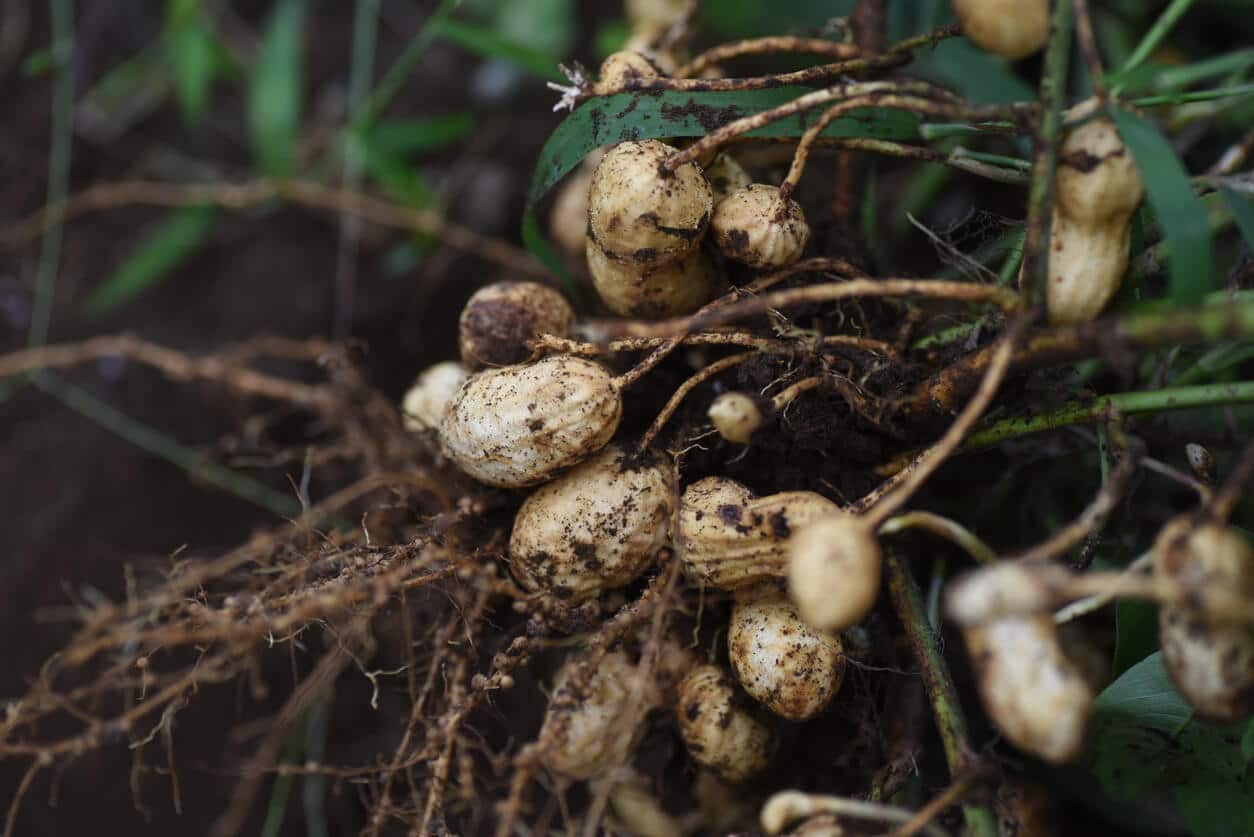University of Georgia scientists are collaborating with African Farmers and Global Scientists for Agricultural Resilience. Together, they formed the Groundnut Improvement Network for Africa to develop disease-resistant and climate-adaptive peanut varieties.
More than 4,000 miles separate the capital cities of Senegal in West Africa and Uganda in East Africa. If you drove eight hours a day, it would take you more than two weeks to make the journey.
Yet both countries grow peanuts and, like other countries across Africa, farmers there rely on peanuts as a food and cash crop and a valuable part of good crop rotation.
Five years ago, plant breeders from Uganda, Senegal, and seven other African countries formed an organization called the Groundnut Improvement Network for Africa (GINA) to work together. With technical guidance and organizational support from the University of Georgia and other U.S. institutions, GINA is developing peanut varieties that help African farmers deal with plant diseases and climate change. The efforts were detailed in a recent UGA news release.
Breeding peanuts to withstand harsh conditions
Peanuts, known as groundnuts in much of the world, are a significant part of local cuisine across the African continent. Mothers add peanut paste to toddlers’ cereal for extra protein. Peanut soup is a savory favorite for adults, and peanuts are a convenient, non-perishable snack for all ages.
In many areas, peanut farmers lack access to irrigation or chemicals to control diseases. They need peanut varieties that can withstand plant diseases and mature before droughts occur.
To address this, GINA partners collected many peanut varieties grown across Africa, evaluated them using the latest genomic technology, and shared the collection across the continent, providing plant breeders with a larger gene pool to work with. The Feed the Future Innovation Lab for Peanut director Dave Hoisington spoke to the efforts in the release.
“The biggest limitation in plant breeding is genetic diversity. You can only add traits that are in the genome of the varieties available to you,” he said. “So, the first thing we needed to do was to learn how much diversity is out there by compiling peanut lines that are grown across Africa.”
Sharing peanut lines across the continent
UGA alumnus and peanut geneticist Josh Clevenger and Ugandan doctoral student Esther Achola examined peanut variety trials growing in Malawi earlier this year. UGA’s Peanut Innovation Lab facilitates a network of African peanut breeders who collaborate with Peggy Ozias-Akins’ lab on the UGA Tifton campus, UGA’s Wild Peanut Lab, HudsonAlpha Institute for Biotechnology, and others to use genetics in the fight against climate change and plant diseases.
Once the African groundnut breeders compiled their most promising lines (over 1,000 in total), Peggy Ozias-Akins’ lab in Tifton genotyped them, with support from HudsonAlpha Institute for Biotechnology in Huntsville, Alabama, and senior researcher Josh Clevenger, who worked in Ozias-Akins’ lab during his doctorate and postdoctoral research.
“The Groundnut Improvement Network for Africa is one of the most profound things I think I’ll witness in my lifetime,” Clevenger said . “Working together, scientists across an entire continent are making a difference for the people of their own countries.”
In 2021, GINA countries—Senegal, Ghana, Togo, Mali, Niger in West Africa, and Uganda, Malawi, Mozambique, and Zambia in East and Southern Africa—met to review data and select a collection of varieties representing the genetic diversity of peanuts grown in Africa. They named the set of 300 lines the “GINA core collection” and distributed it across the continent for plant breeders to use.
This means a plant breeder in Malawi might be growing a variety from Senegal to cross with a local variety that needs more drought tolerance. Simultaneously, breeders can predict how local varieties will fare under changing climates or new disease pressures.
Fighting a devastating plant disease
One of the earliest successes of the GINA network is combating groundnut rosette disease (GRD), a virus complex spread by aphids. The disease, which hasn’t reached U.S. fields, is spreading across Africa and can devastate peanut crops.
“At the end of every season, we could sit and compare data to see what we had,” said David Okello, the principal groundnut breeder for Uganda. Uganda, a hotspot for GRD, provides important resistant varieties for colleagues across Africa.
The international research community is taking note of GINA’s work. Ugandan graduate student Esther Achola recently won the prestigious Joe Sugg award, the top award given to graduate students by the American Peanut Research and Education Society, for her work with GINA materials in the fight against GRD.
The network’s work could also be crucial for U.S. growers if GRD appears in the U.S. Georgia farmers currently cannot gauge the susceptibility of their varieties to GRD, but considering the impact in Africa, the disease could cause significant economic damage here. The more plant breeders understand about genetic resistance, the quicker they can respond, whether in Africa or the U.S.
“GINA is still relatively new and, while the network has achieved great success, I don’t think we know what these scientists will be able to accomplish for farmers in their home countries and around the globe,” said Hoisington. “This type of collaboration, built on trust among the partners and the latest genomics technology, will make a difference for decades to come.”
GINA has grown to include 13 countries, collaborating with the Peanut Innovation Lab, Hudson Alpha, and the Wild Peanut Lab at UGA, which uses wild relatives of modern peanuts to add more diverse genes to the plant.
By working together, the group empowers individual scientists to respond quickly to climate change and other environmental pressures, easing food insecurity and improving farmers’ livelihoods.










